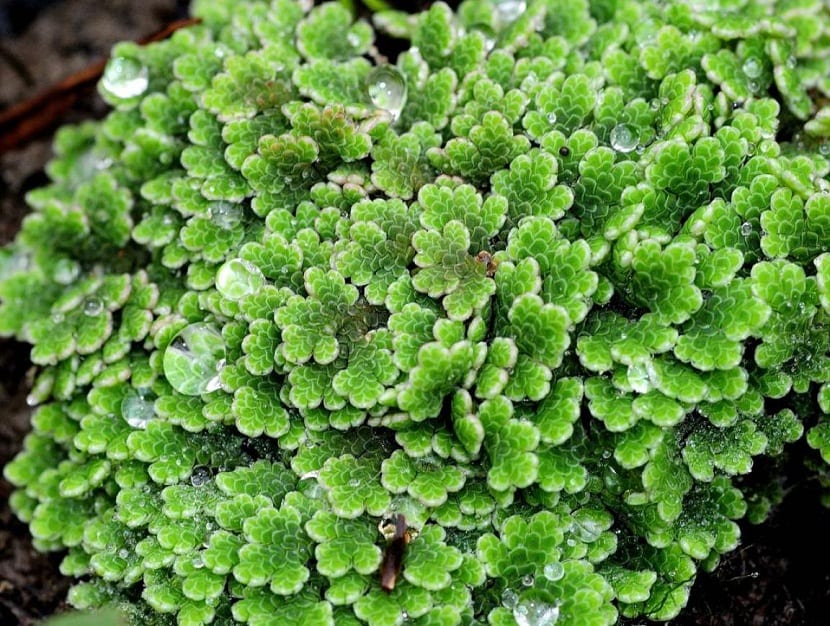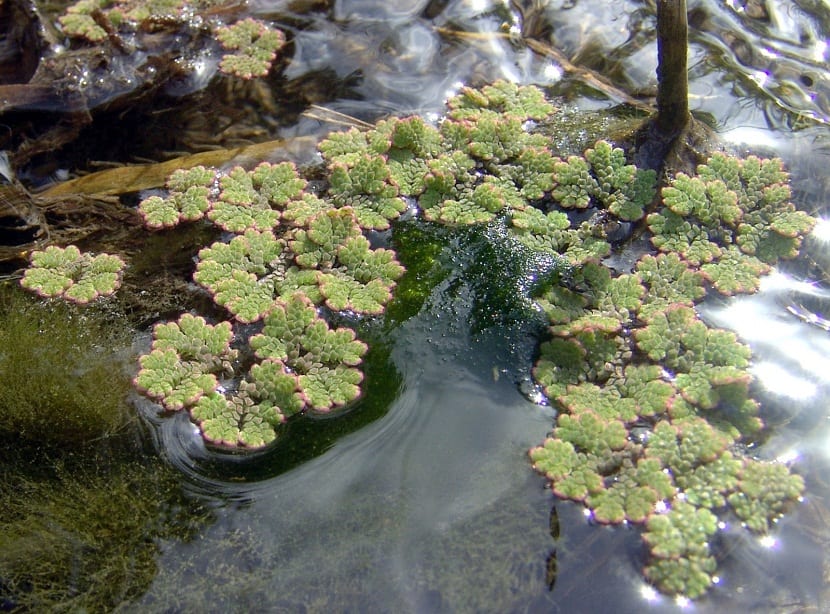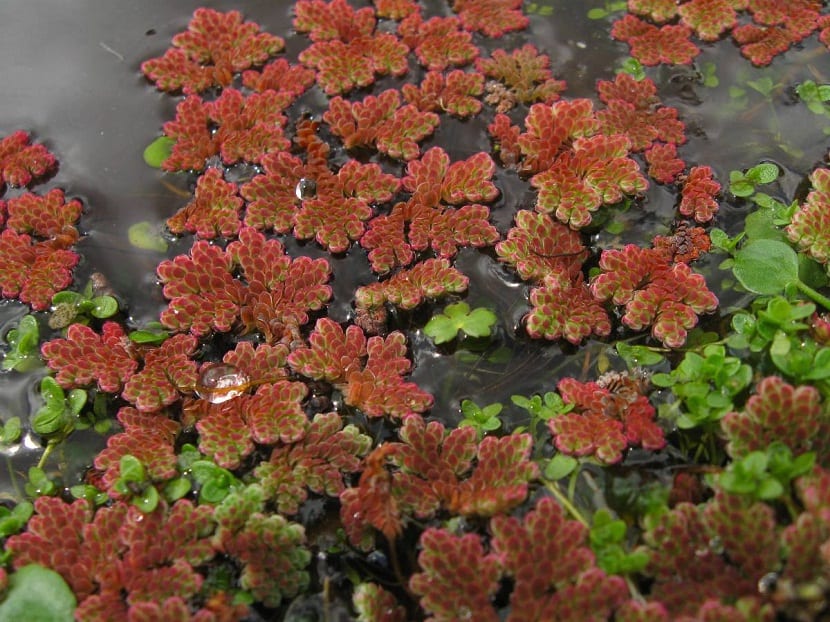
Azolla filiculoides commonly known as mosquito fern and / or water fern, is a water fern which is characterized by being an annual grass of quite small size, which within populations has the ability to grow to cover enormous surfaces creating in certain cases, a continuous layer on the surface of the water in puddles, lagoons and even, in the aquarium surfaces, which is why it is considered a pond and aquarium plant.
However, due to the rapidity with which it grows, as well as the impacts it generates on the environment, it is classified as an invasive plant species and aggressive within several countries, Spain being one of them.
Features

That is why the introduction of Azolla filiculoides into the medium is prohibited native of the country, in the same way as its trade, transport and / or possession. Which is due to the fact that a large part of the introductions that take place within the medium are made accidentally.
It is a plant native to America, specifically its temperate regions; which has a size that round 2,5-10cm and it has triangular shaped leaves through which they can stay afloat on the surface of the water.
In general, it has a fluffy and quite attractive appearance, which is why it is very famous as a plant for aquariums, this being the main reason why it is accidentally introduced in an environment far from its area of origin.
Its leaves are small in size (about 1mm), they are oblong, or ovate, sessile (without stem or petiole), deeply imbricated with each other, bilobed and compressed, which allows them to completely cover the ramifications, in addition, it has a membranous and practically translucent border .
Likewise, their sori are united within structures known as sporocarps, which in turn are covered with leaves. These structures, in their male variant, are characterized by being spherical in shape, sessile, isolated and not having scales or hairiness.
Similarly, microspores have a spherical shape y they develop in groups. For its part and in its female variant, they are usually pyriform, do not have hairiness or scales, have a perforated surface, have a megaspore that stands out for being highly tuberculated and have superior structures that allow it to float.
They have the ability to develop in waters with a pH of approximately 5-7, and also soft or medium hard waters, whose temperature is between 10-28 ° C. It is worth mentioning that the Azolla filiculoides are bright green and gray when young, while when they reach maturity they turn pink or red and dark brown. What's more, has much longer and thicker roots growing within its original environment.
The populations of this plant have the ability to remove the metals present in the water, within which are for example: copper, lead, chromium, nickel and / or zinc. After this, the plants are harvested, dried and treated as solid waste, so they turn out to be significantly more manageable compared to a liquid waste.
It is of great interest to agriculture

Rice is usually grown around flooded land, so in various Asian countries, it is usual to sow this plant within the fields dedicated to rice cultivation for a few months prior to sowing the rice itself.
This is because the Azolla filiculoides completely covers the water, preventing the development of weeds, and once the ferns die, they contribute nitrogen to the soil of the crop fields.
Thus it is possible to prevent the use of industrial fertilizers, which in addition to being expensive, tend to contaminate aquifers as a result of excess nitrogen that seeps from the ground.
Finally, it must also be said that this fern is becoming a problem, since it is quite invasive, although they are already taking action on the matter.